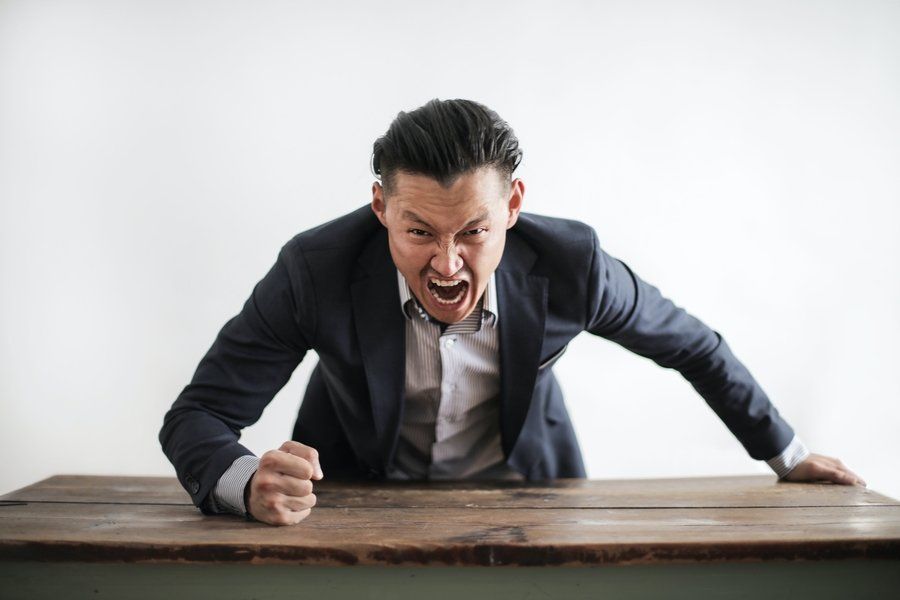Was That A Blink Or A Wink?

Your body language speaks volumes about you! (Part I)
Someone once asked me if I’ve ever been late for classes. Not unless my three alarm clocks die on me simultaneously. After a decade of conducting various training programmes, it would really only take me 10 minutes to get myself ready.
So, why am I always earlier than anyone else? Body language. When I’m early, it allows me to “read” my participants as they walk in.
From the moment the person greets me, whether it’s a soft “hello”, a loud “good morning” or a reluctant “hi”, it allows me to do a quick profiling of them.
When seated together, whether participants carry out small talks, or choose to have their noses buried in their smartphones, also give out signals on whether they signed up for training voluntarily or had their names hand-picked by management.
We step into unfamiliar ground when we attend public seminars or workshops. Most of the time, we won’t know who the speaker is or whom we will be seated with. All these uncertainties cause us to display real and involuntary movements which speak volumes about us.
Now, imagine if you have to attend or make a presentation in an important board meeting – the fear will be heightened 10-fold! If you make a conscious effort to be aware of every gesture you make, especially in times of stress, then you can control and make your body language work for you.
Below are real-life behavioural examples that I see in every class. Check if you are guilty of any.
1. Are you the one to greet first?
When a person walks in, I will usually pause a few seconds to see if he/she greets me first. A more confident person will usually take the initiative to announce his/her arrival; whereas a shy individual will usually smile or only reply after I initiate the first move.
Lesson: The one who greets first will always have the upper hand. It sends a signal that you are assured and confident.
The tone of your voice, volume pace and emotion also influence the messages you send. Increase your volume, but not your pitch. Higher volume projects higher authority. If your pitch goes up at the end of the sentence, it will sound as if you are seeking approval, making you seem less confident.
2. Do you stop to look or slouch to seek?
After signing in at the registration counter, two things happen.
A participant will either walk in with an upright posture, scan the room, and take his/her seat. Or, he/she will stoop a little, with the neck and head stretched forward slightly, as if seeking for a familiar face to sit with, before heading towards a seat (which is usually the furthest from the speaker).
Lesson: Your posture speaks a lot about you. Each part of your body works separately as well as together to send non-verbal cues.
In creating an executive presence, walk with an upright posture! Keep your chin parallel to the floor, your shoulders straight and take your time to pan across the room.
Keep your head straight and walk specifically towards your chosen seat. Don’t turn your head and avoid darting your eyes everywhere. Aim to maintain a calm and collected look.
3. Do you initiate a handshake?
As my participants enter the classroom, I will wait to see who extends a hand, or who will just greet me with a “hello”.
If nothing happens (exception for Muslim men to whom I will usually greet with a smile and nod), I will then move forward to shake their hands.
Apart from creating rapport, the first physical contact with a person by a handshake is a good indicator of your level of confidence.
Lesson: Cultural norm dictates that a person of a higher standing, in age or in rank, should initiate a handshake. If both are equal, the person who offers the handshake first will be perceived as one with more confidence.
So when someone extends his/her hand to you, reciprocate with a confident, web-to-web touching, full palm grip if you want to project an image of poise and professionalism.
Anything that is weak or soft indicates that you may be a timid person lacking self-esteem. Anything that is too strong may result in the other person resenting you for hurting their hand!
4. Front or back seat?
In any seminar or workshop, it is common to see people occupying the back seats first. One of the many reasons is to make a quick escape if the lecture is dull.
However, for those whose attendance is compulsory, the shy or reluctant individuals will usually take the back seat. The more outspoken or eager ones will head straight to the front.
Lesson: In the business world, we spend a great deal of time in various meetings. Where you sit, how you sit and whom you sit with play an integral role in how you are perceived by your fellow colleagues.
For example, a person seated at the head of the table is generally perceived as someone of a higher status.
However, if you want to be seen as influential, then make a conscious effort to sit next to a leader. If you constantly hide behind, you will gradually fade into the background.
5. Arms and legs folded or stretched out?
A common phenomenon observed at the start of every session is where people would either fold their arms or hide them under the table, lean towards the table or slump back with their legs crossed.
These are indicators of people who are defensive or resistant.
Even the way a person places his/her tent card – whether he/she keeps it close to her or pushes it farther away from the body – shows the level of openness.
Lesson: During meetings, have a relaxed posture. You don’t have to be so stiff that you look unnaturally attentive. Just sit on half your chair, lean forward slightly and place your arms on the table.
Keep your eyes on the speaker. Don’t flip through the papers and don’t doodle. Don’t scroll through your messages either. If you need to gesture with your hands, keep them controlled, and preferably no higher than your chin level.
If you come across similar negative gestures with people you are trying to connect with, then hand out your business cards or offer the person a cup of tea – anything as long as they uncross their arms and legs.
Body language is a very powerful tool for influencing others in many ways. So hone your skills in this area; be aware of all the silent signals you are sending. Learn also to decipher what other people are “saying” by reading gestures and expressions.
Wendy Lee is president of Mabic (Malaysian Association of Brand & Image Consultants) and a director of BII (Brand Image International Institute). She is a firm believer that with style… there must be substance! Send us your feedback at editor@leaderonomics.com . Click here for more articles.
Personal
This article is published by the editors of Leaderonomics.com with the consent of the guest author.






